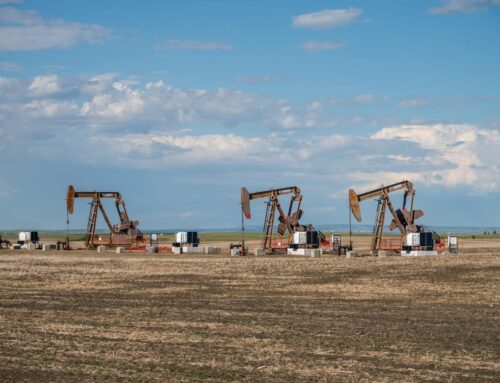This year, yet again, the U.S. produces more oil than any other country. It’s been that way since 2018. New technologies like hydraulic fracturing brought about a drilling boom that has more than doubled U.S. oil production since the early 2000s. In their rush to set up shop, oil and gas operators began leaking, releasing (venting), and burning (flaring) off large quantities of natural gas, a byproduct of oil production wells. Natural gas is relatively cheap, and focusing on the more valuable crude oil is more profitable. However, what’s considered cheap and not profitable for oil and gas operators is valuable to consumers and taxpayers. All this wasted gas could have heated our homes and kept our lights on, but instead, it literally went up in smoke. And if this gas was produced on state and federal land, it would be subject to a royalty, meaning taxpayers also lose out on potential revenue from this wasted gas.
To quantify just how huge this loss is: in 2019, operators wasted 163 billion cubic feet of natural gas from U.S. public and tribal lands, translating into nearly $64 million in lost potential royalty revenue. This amount of lost natural gas could meet the yearly needs of 2.2 million households, nearly the same number as everyone living in New Mexico, North Dakota, Utah, and Wyoming. And that is just from federal and tribal land.
Across the entire state of Texas (including private and public land), oil and gas companies wasted $1.7 billion worth of gas in 2019, enough to meet 247 percent of the state’s entire residential consumption and raise $128 million in revenue for federal, Texas, and tribal taxpayers. The same year, companies in North Dakota wasted more than $680 million worth of gas, enough to meet the state’s entire residential natural gas demand 16 times over and raise $43.3 million in revenue.
Taxpayers don’t just pay in the form of lost potential revenue and wasted resources. Leaked, vented, and flared methane also costs taxpayers by accelerating climate change. Methane, the main component of natural gas, is a greenhouse gas 80 times more potent than carbon dioxide and responsible for about one-third of global warming. As climate change intensifies natural disasters like wildfires, hurricanes, floods, and droughts, taxpayers are paying the price. For perspective, taxpayers spent roughly $120 billion on disaster response in 2017, which is more than every federal agency’s discretionary budget other than the Pentagon. Over the last five years, taxpayers’ average annual disaster cost was 35 percent higher than the previous five.
But it is still not too late to act.
A new rule from the Environmental Protection Agency will help ratchet down methane waste from oil and gas facilities, major contributors to our nation’s methane emissions, through new performance standards and emissions guidelines. This rule restricts when operators can voluntarily release methane, through venting and flaring, and imposes greater standards for leak detection and reporting throughout the oil and gas production process.
Leaks, sometimes referred to as fugitive emissions, account for nearly half of U.S. methane emissions in the oil and gas sector. Despite this, operators were not required to regularly check for leaks. Under this new rule, operators must routinely monitor for leaks at all well pads, regardless of the facility’s size. This and other mitigation requirements are based on proven, cost-effective technologies already required by prior EPA regulations, states regulations, or adopted by industry leaders to reduce methane emissions.
The final rule also goes further than the proposed rule to limit venting and end routine flaring. Venting and flaring will only be allowed for short timeframes under specific and temporary circumstances, like leakage tests or safety concerns. Existing wells can apply for and receive an exemption from the new rule, but only if the operator can prove that it is “technically infeasible” to gather the associated gas.
The rule also creates a new program that allows third parties to report major methane leaks, called Super Emitter events. Allowing certified third parties to alert EPA of major methane leaks will help address super-emitter events in a timely fashion, as these events are underrepresented in current data but actually account for a significant portion of total methane emissions in the oil and gas sector.
TCS submitted comments to EPA on the proposed rule at the beginning of this year, and we’re pleased to see many of our recommendations reflected in the final rule. Addressing the wasteful practices of venting and flaring of natural gas will benefit taxpayers by stopping a valuable energy source from being wasted, bringing more royalty revenues, and protecting human health.
For far too long, the oil and gas industry has been allowed to leak, vent, and flare natural gas during their operations, at taxpayer’s expense. The new rule is a strong step to curtail the waste and hold the industry accountable.











Get Social